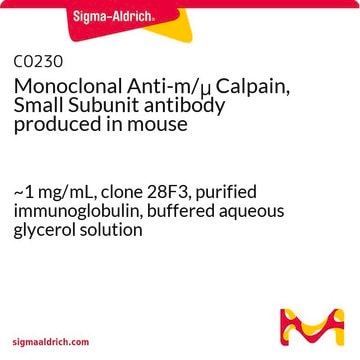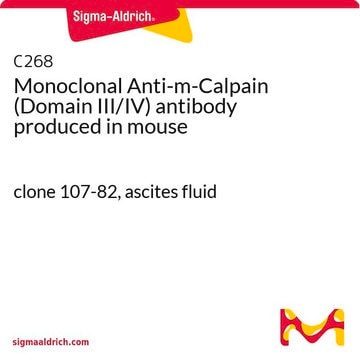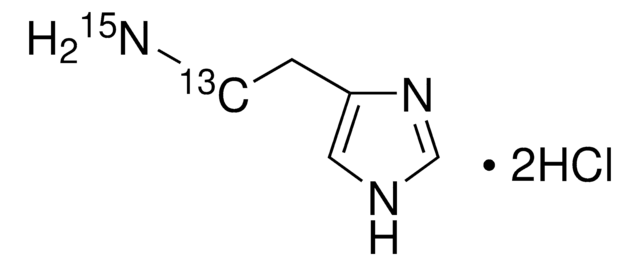C5736
Monoclonal Anti-μ-Calpain (Calpain I, subunit p80) antibody produced in mouse
clone 15C10, purified immunoglobulin, buffered aqueous glycerol solution
Sinónimos:
Anti-CANP, Anti-CANP1, Anti-CANPL1, Anti-SPG76, Anti-muCANP, Anti-muCL
About This Item
Productos recomendados
origen biológico
mouse
Nivel de calidad
conjugado
unconjugated
forma del anticuerpo
purified immunoglobulin
tipo de anticuerpo
primary antibodies
clon
15C10, monoclonal
Formulario
buffered aqueous glycerol solution
reactividad de especies
bovine, mouse, rat, human
técnicas
immunoprecipitation (IP): 2-5 μL (native and denaturing conditions)
indirect ELISA: suitable
western blot (chemiluminescent): 1:1,000
isotipo
IgG1
Nº de acceso UniProt
Condiciones de envío
wet ice
temp. de almacenamiento
−20°C
Información sobre el gen
human ... CAPN1(823) , CAPNS1(826)
mouse ... Capn1(12333) , Capns1(12336)
rat ... Capn1(29153) , Capns1(29156)
Descripción general
Especificidad
Inmunógeno
Aplicación
Acciones bioquímicas o fisiológicas
Forma física
Cláusula de descargo de responsabilidad
¿No encuentra el producto adecuado?
Pruebe nuestro Herramienta de selección de productos.
Código de clase de almacenamiento
10 - Combustible liquids
Clase de riesgo para el agua (WGK)
WGK 1
Punto de inflamabilidad (°F)
Not applicable
Punto de inflamabilidad (°C)
Not applicable
Equipo de protección personal
Eyeshields, Gloves, multi-purpose combination respirator cartridge (US)
Elija entre una de las versiones más recientes:
¿Ya tiene este producto?
Encuentre la documentación para los productos que ha comprado recientemente en la Biblioteca de documentos.
Active Filters
Nuestro equipo de científicos tiene experiencia en todas las áreas de investigación: Ciencias de la vida, Ciencia de los materiales, Síntesis química, Cromatografía, Analítica y muchas otras.
Póngase en contacto con el Servicio técnico







